Anish Kapoor in Venice. Fluid and uncanny
The history of painting is full of mirrors, concave or convex, used to show hidden, distant details or simply behind that rectangle chosen by the artist to limit his or her thoughts. The mirror is a device within a work that is itself a device and, as such, helps to invert the reality of the work (and perhaps of us) within our world. It is hard not to be overwhelmed by these thoughts in the small courtyard of the Gallerie dell’Accademia, as, with an artist friend who studied here, we prepare to take a picture in front of Anish Kapoor’s Sky Mirror. That mirror brings, in the absent volume of the courtyard inhabited only by a well, a piece of sky and a cutout of the palace’s architecture, on the upper and side edges. Frontally, the mirror sucks in a portion of the context, concentrating it on its concave surface, while, posteriorly, the convex metal surface acts by dilating the image of the observer, dispersing it in space along with everything he or she has in its proximities. In both cases the mirror is baroque device, showing, surprising and revealing something that was about to escape.
Anish Kapoor’s Venetian exhibition, curated by Taco Dibbits (director of the Rijksmuseum in Amsterdam), opens with this work-threshold, and divided into two very different spaces such as the Gallerie dell’Accademia and Palazzo Manfrin in Canareggio, linked by the history of the institution’s collections: two of the most famous paintings in Giorgione’s restricted catalog, The Old Woman and The Tempest, then owned by the tobacco merchant Manfrin, were in fact housed here in the nineteenth century before being acquired by the Accademia on the side. The exhibition of the English artist, of absolute delight, is complex and highly articulated, being in fact an anthological exhibition constructed with anti-chronological criteria. In fact, it is observed that the selection of works followed more the comparison with the spaces than a functional criterion for the internal narrative among the works or the analysis of the artist’s conducted research. And this liquidity (in allowing oneself to be led freely in the selection, but also in adapting to the container through the reenactment of the works) allowed the exhibition to become even more intense, managing to thicken it on the pure visual aspects and the strong psychoanalytic charge of many of the works.
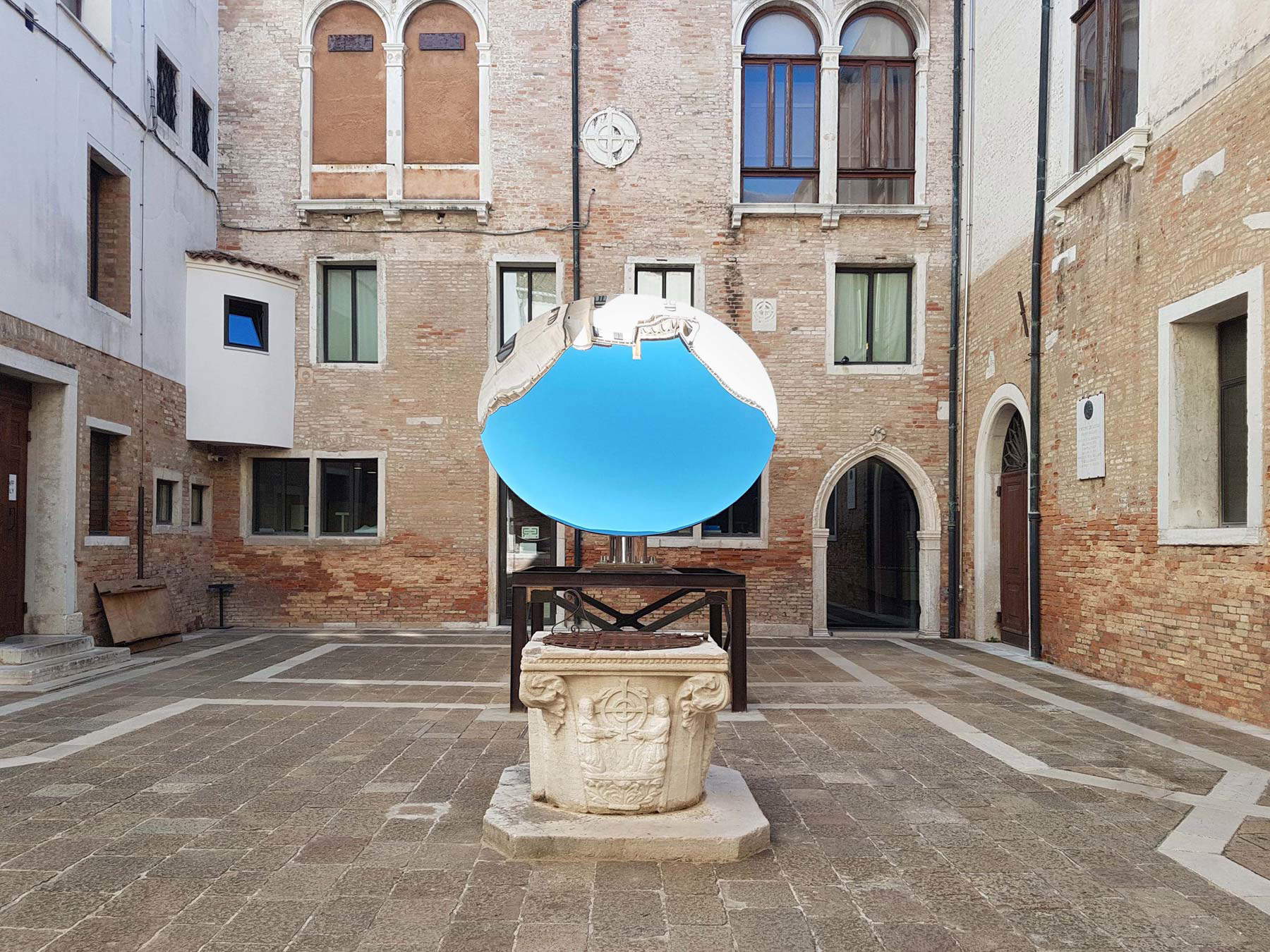
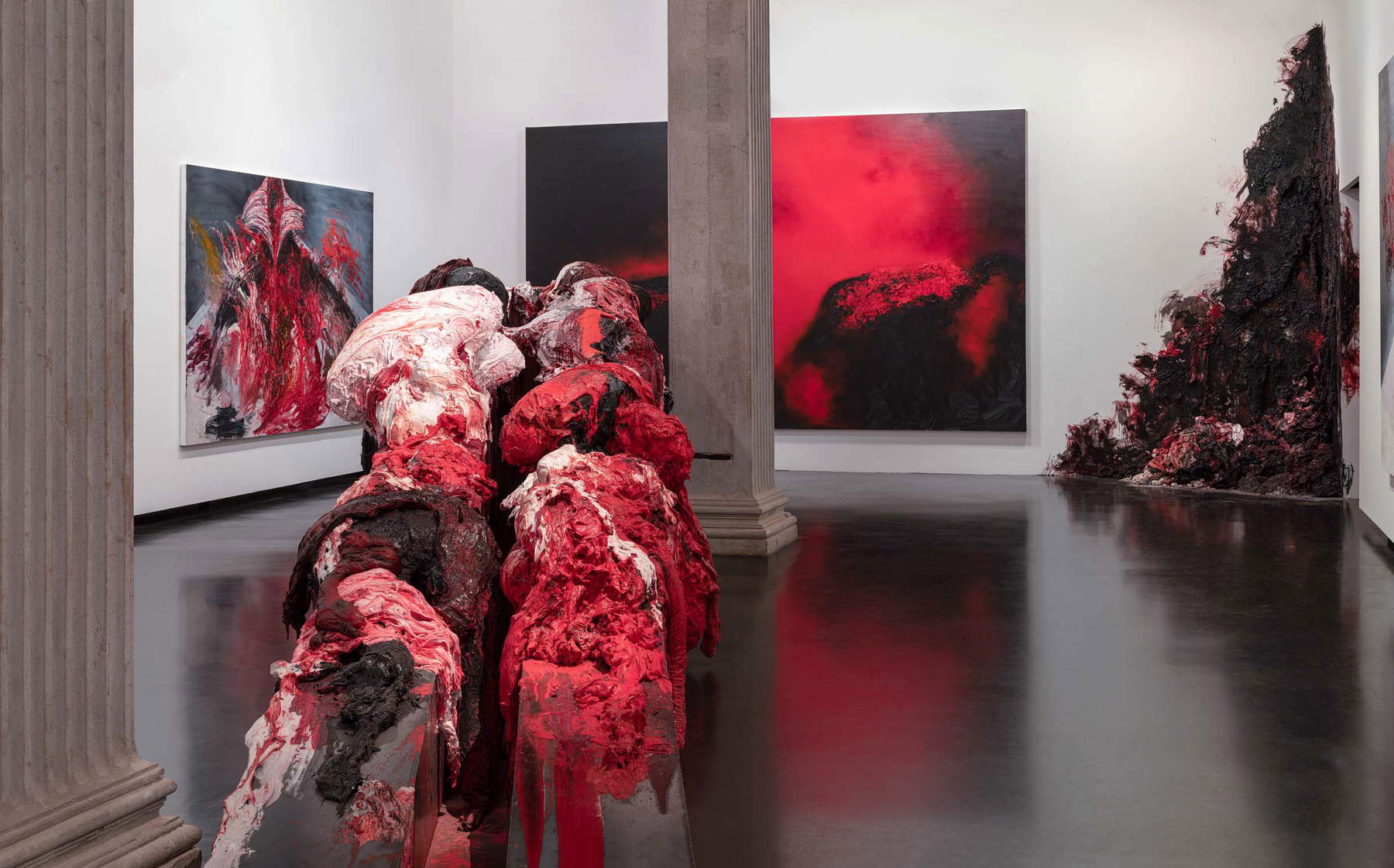
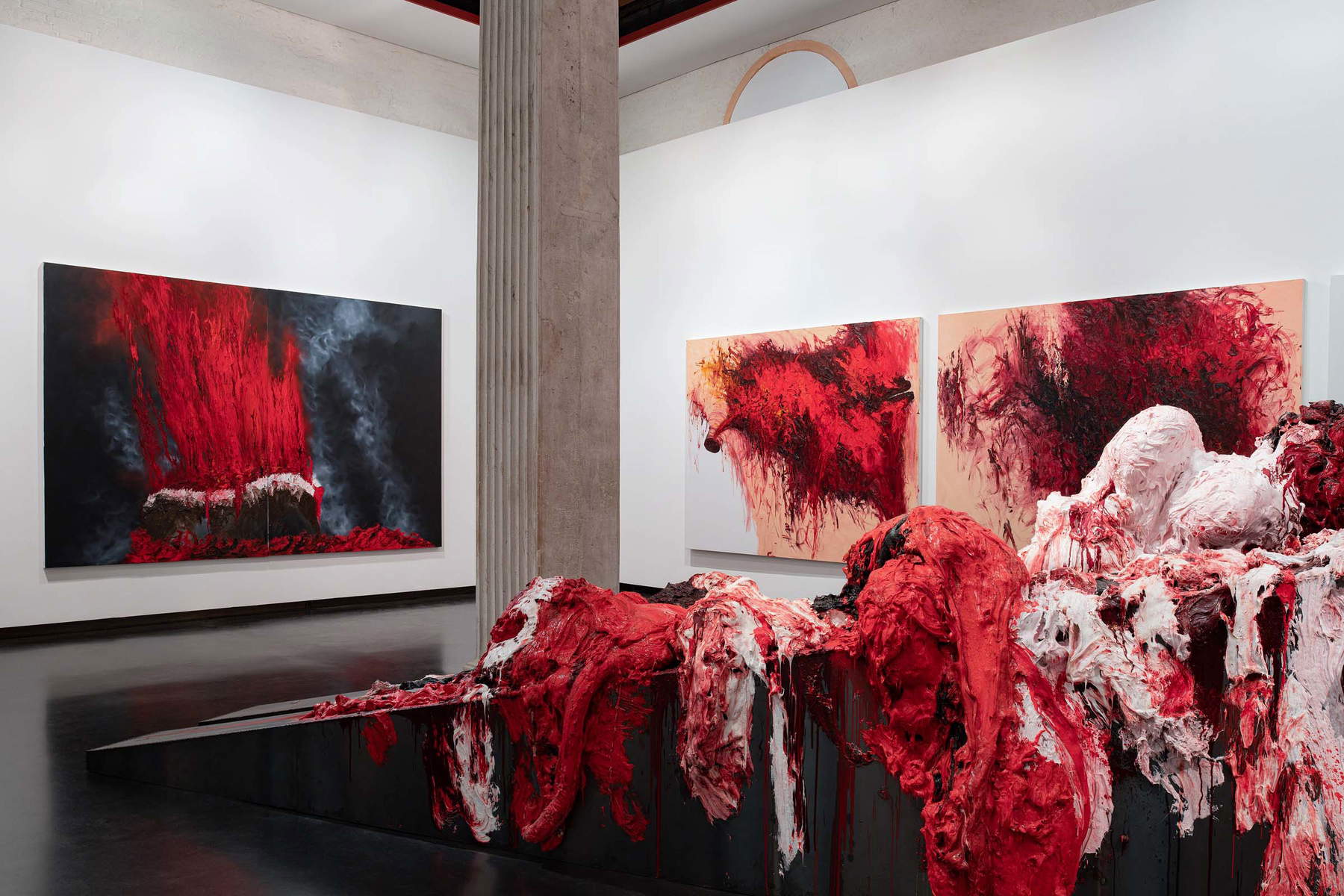 View of
View of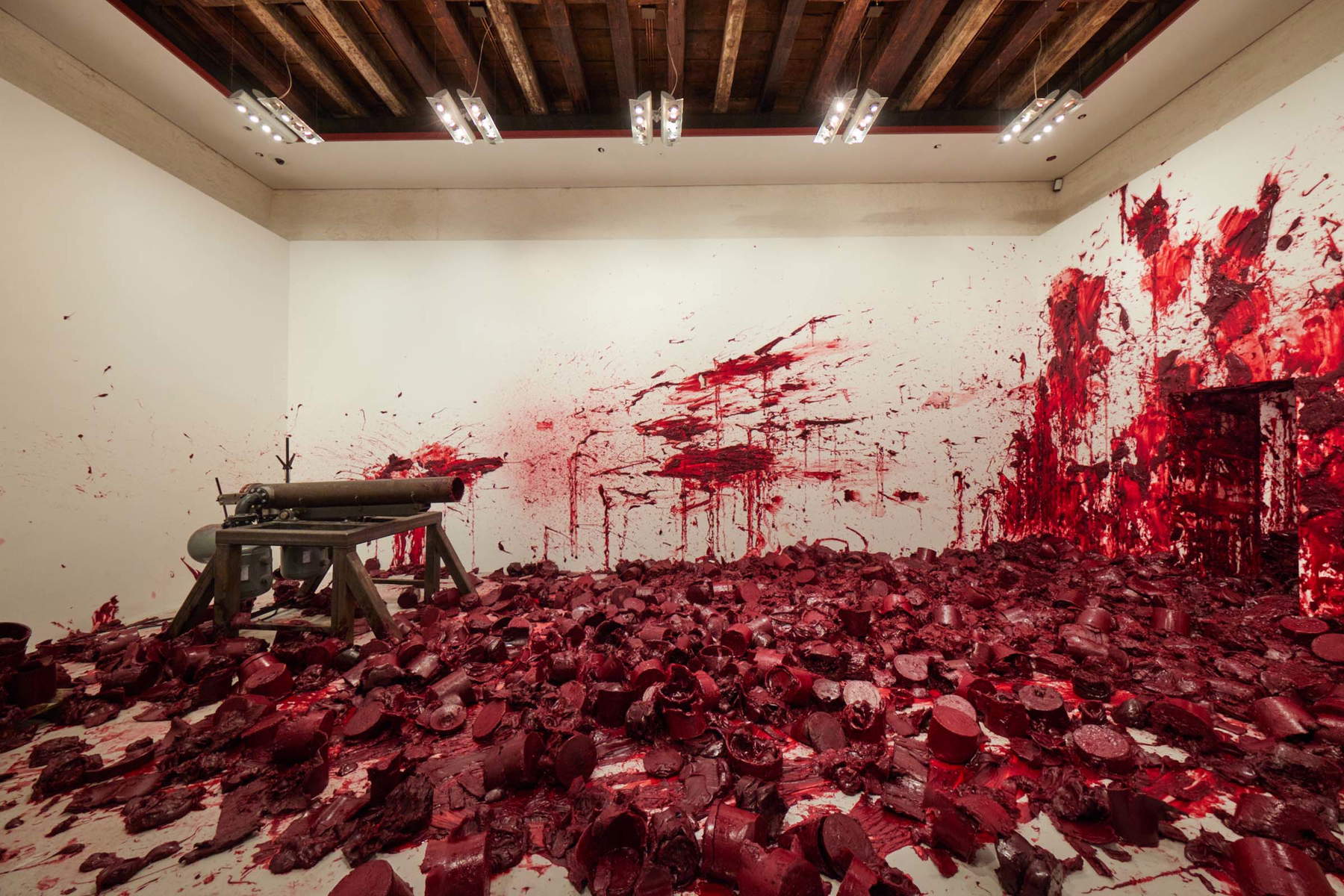
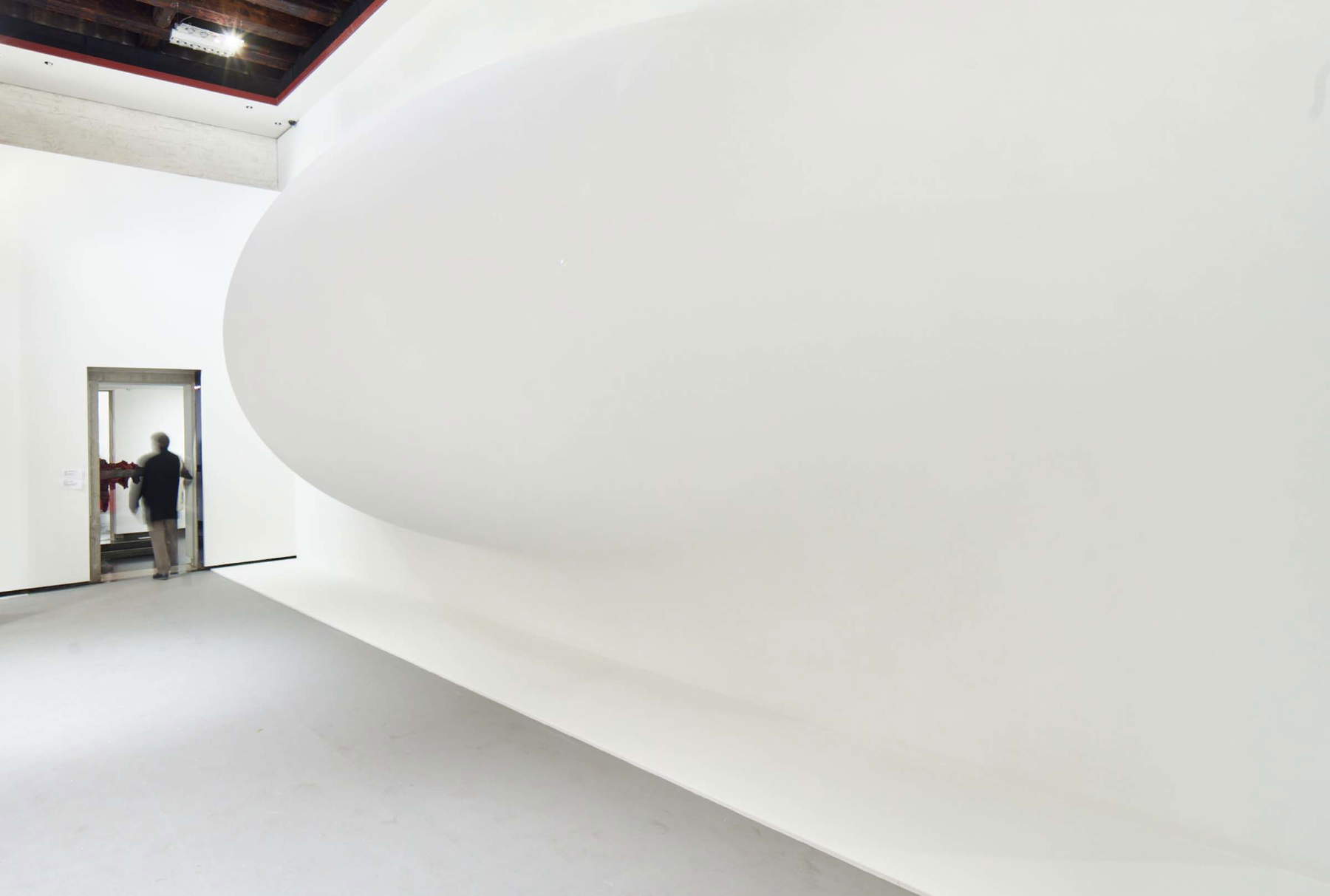
The first room inside the Gallerie dell’Accademia is in stark contrast to the outside: not the Venetian sky but a sea of color. Red, black, white (colors of life and death) pure and textural on the canvas, on the surface of the walls, on a metal plinth on which a dragon possessed by color seems to have bled to the point of purging its entrails, decapitated by a St. George hidden somewhere(The Unremembered). Some paintings are overtly aniconic, while most seem to allude to details of human anatomy and erupting volcanoes. But it is the gestural force, the sign, that prevails: sometimes they call to mind both the nervous figuration of Willem de Kooning, sometimes the orgies of brushstrokes and matter of Hermann Nitsch. It remains a surprise to see an artist with Kapoor’s history (who has worked a great deal with sculpture, even in the sense of chromatic matter) investigating with painting obvious formal, and often psychoanalytic, obsessions related to the body and its being flesh, translating into two-dimensional form, as Mario Codognato writes in the catalog essay, “that corporeality, that carnality, that archaic blood-based rituality, common to all civilizations, which Kapoor posits and analyzes as the origin of art, culture and human history.” The outcome is emotionally powerful, capable of projecting the viewer elsewhere, because of the references to archetypes such as the mouth, orifices, and, as also seen in the last room of the itinerary, to the female body and its generative capacities: it seems to be an obsession, as frequently witnessed by the titles of the works (in which the word mother is recurrent). The largest room of the itinerary hosts at the antipodes two works that best embody the dialogue between the male and female bodies, starting from the menacing cannon that shoots/ejaculates color(Shooting into the corner) to Pregnant white within me, a splendid new large-scale site-specific work in which the wall is extruded, pregnant with a primary form, but the projecting part disappears when viewed frontally.
The same space and the next one host sculptures that use pigments capable of absorbing light and appearing to be mimetically flat, although they actually have a three-dimensional form: it can be perceived by the viewer only by adopting a side view, sidelong, moving and thus breaking the usual stillness of contemplation. If the former have to do with matter even in being portions of a wall or monumental sacred stone, the latter are pure abstraction and blatantly recall Kazimir MaleviÄ’s black square painted on a white background, whose presence is also evoked by the placement of a work high up on the vertices of the walls, as in the famous setting of The Last Futurist Exhibition of Paintings 0.10 in St. Petersburg. In both cases we are faced with simple geometries, in which matter is concealed or manifested by taking a particular form: it clumps into an object from nothing, or, in nothingness, dissolves into dark color. As psychoanalyst Giuseppe Civitarese writes in the catalog, Kapoor’s “is a magnificent and painful questioning of the objectuality and otherness of the object. What motivates it is the desire, specific to each human being and impossible to satisfy, for its absolute presence,” exemplified by the vital red and the “disturbing blackness of finitude, represented by the mere matter dust you are and dust you will return.”
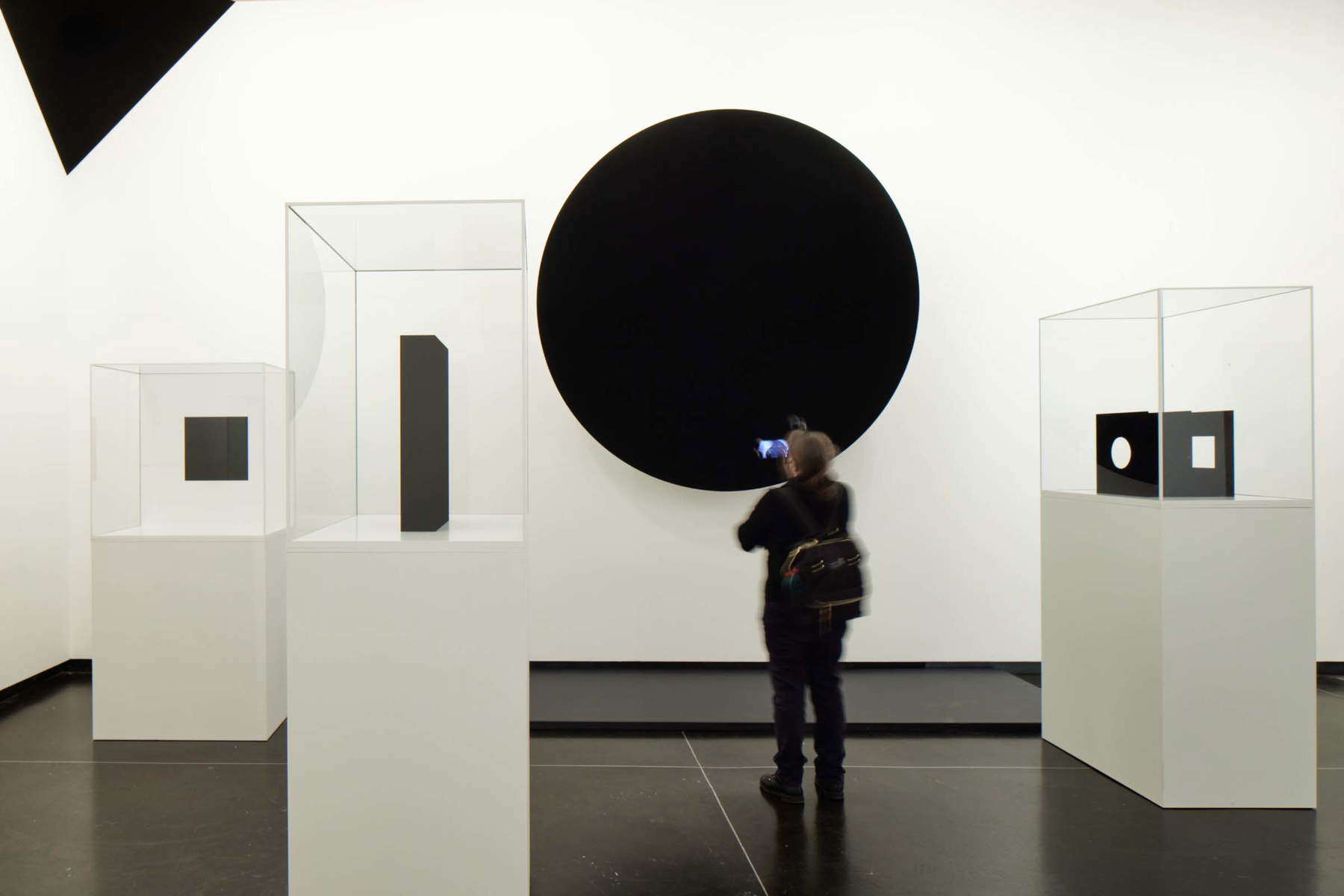
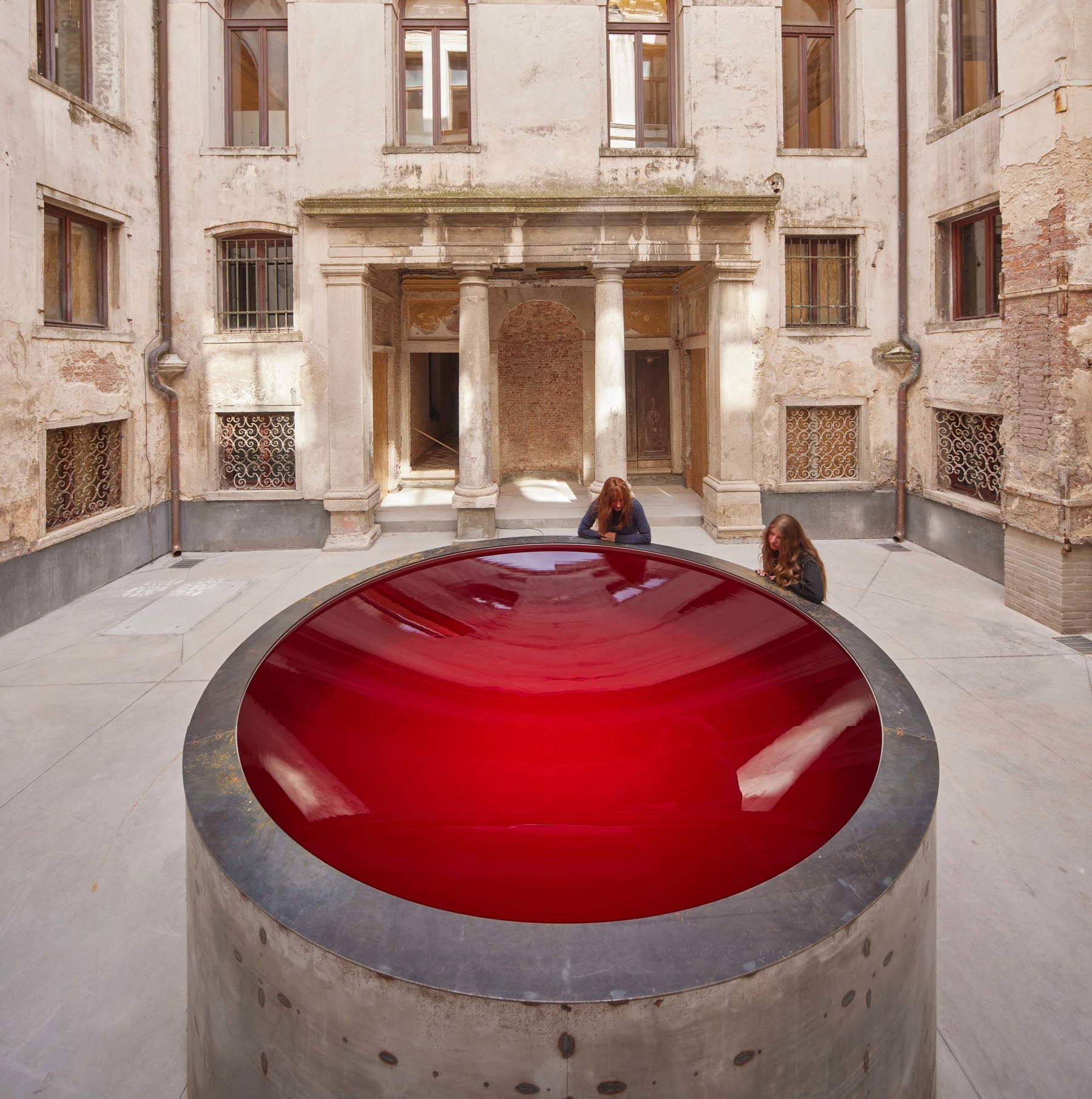
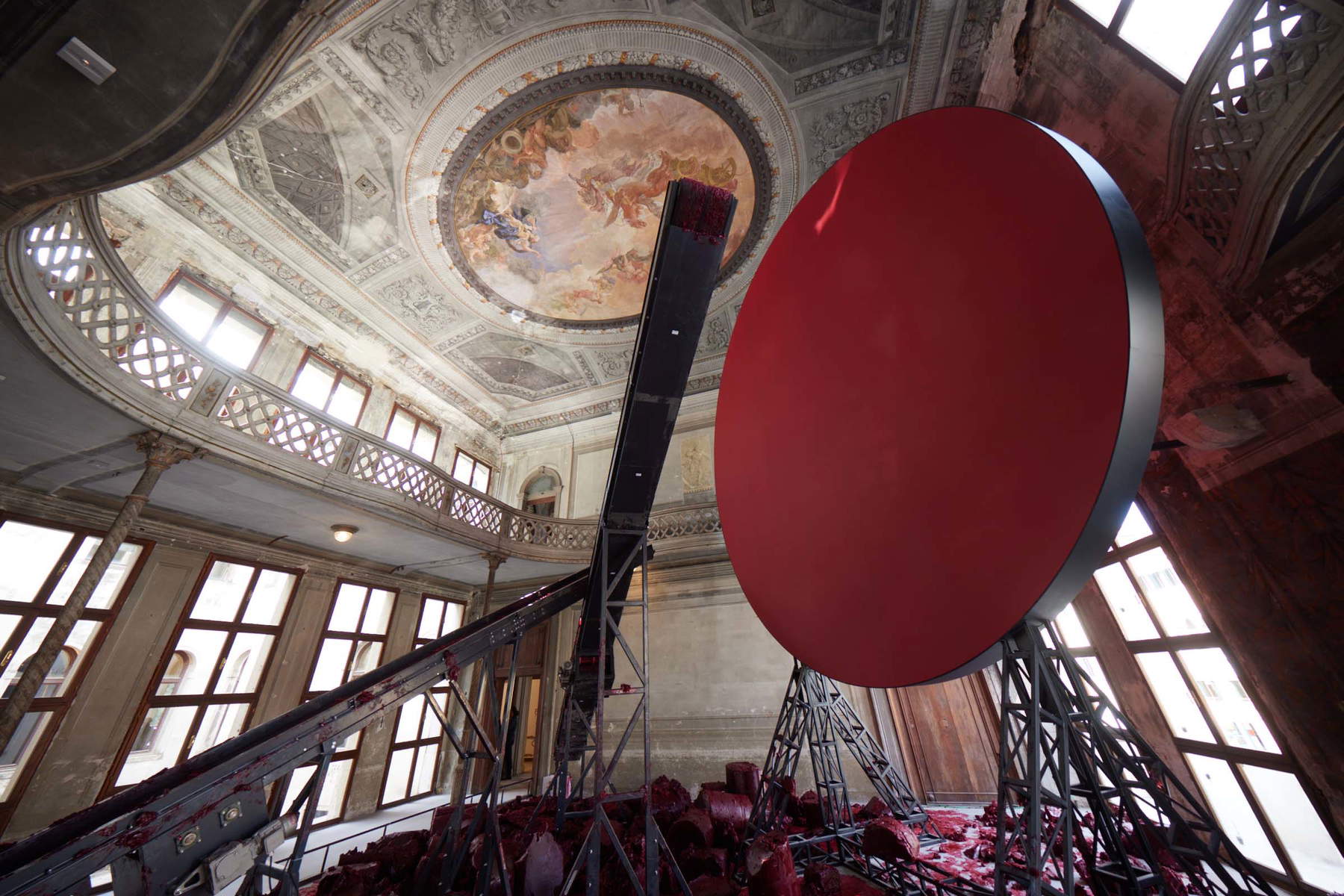
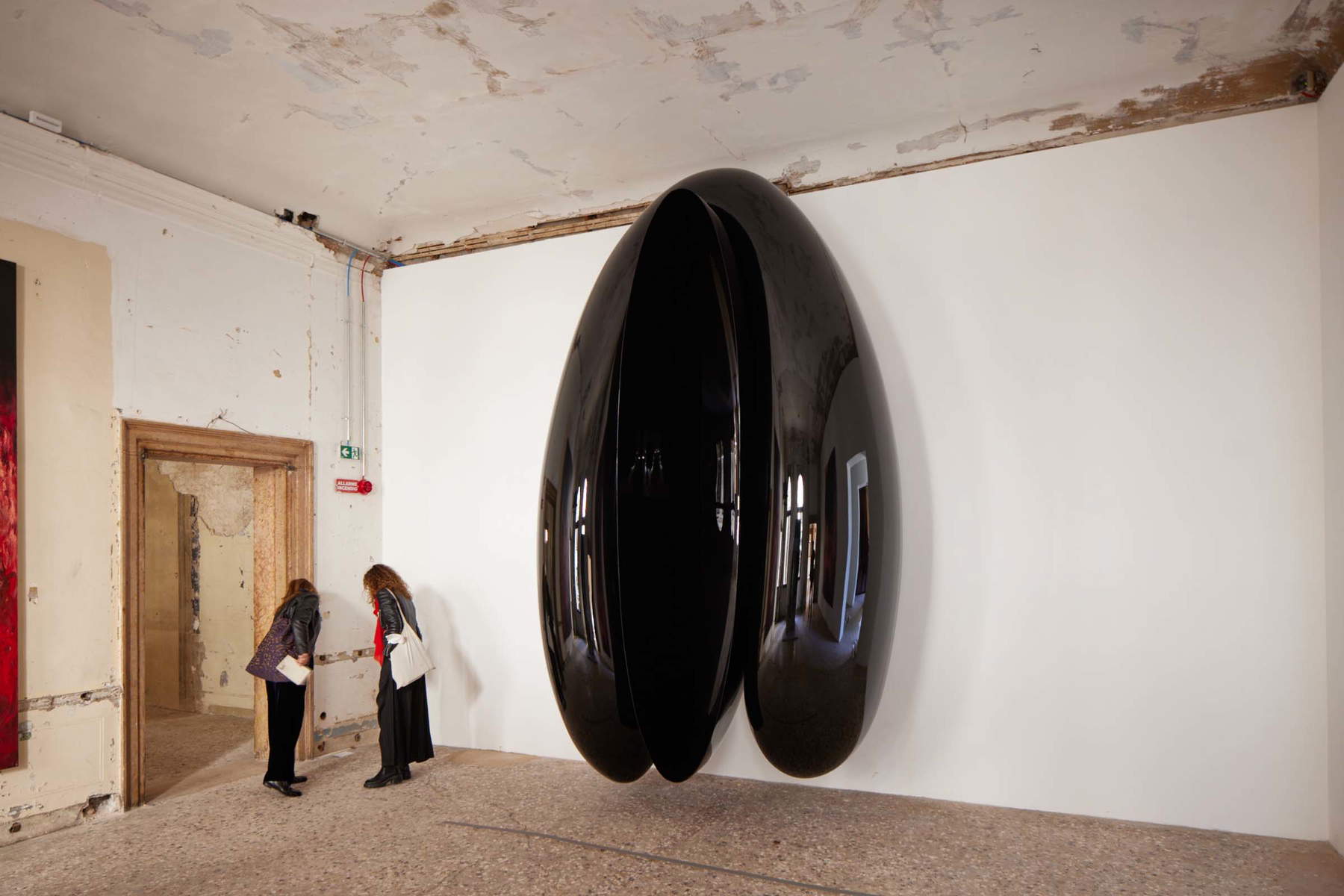
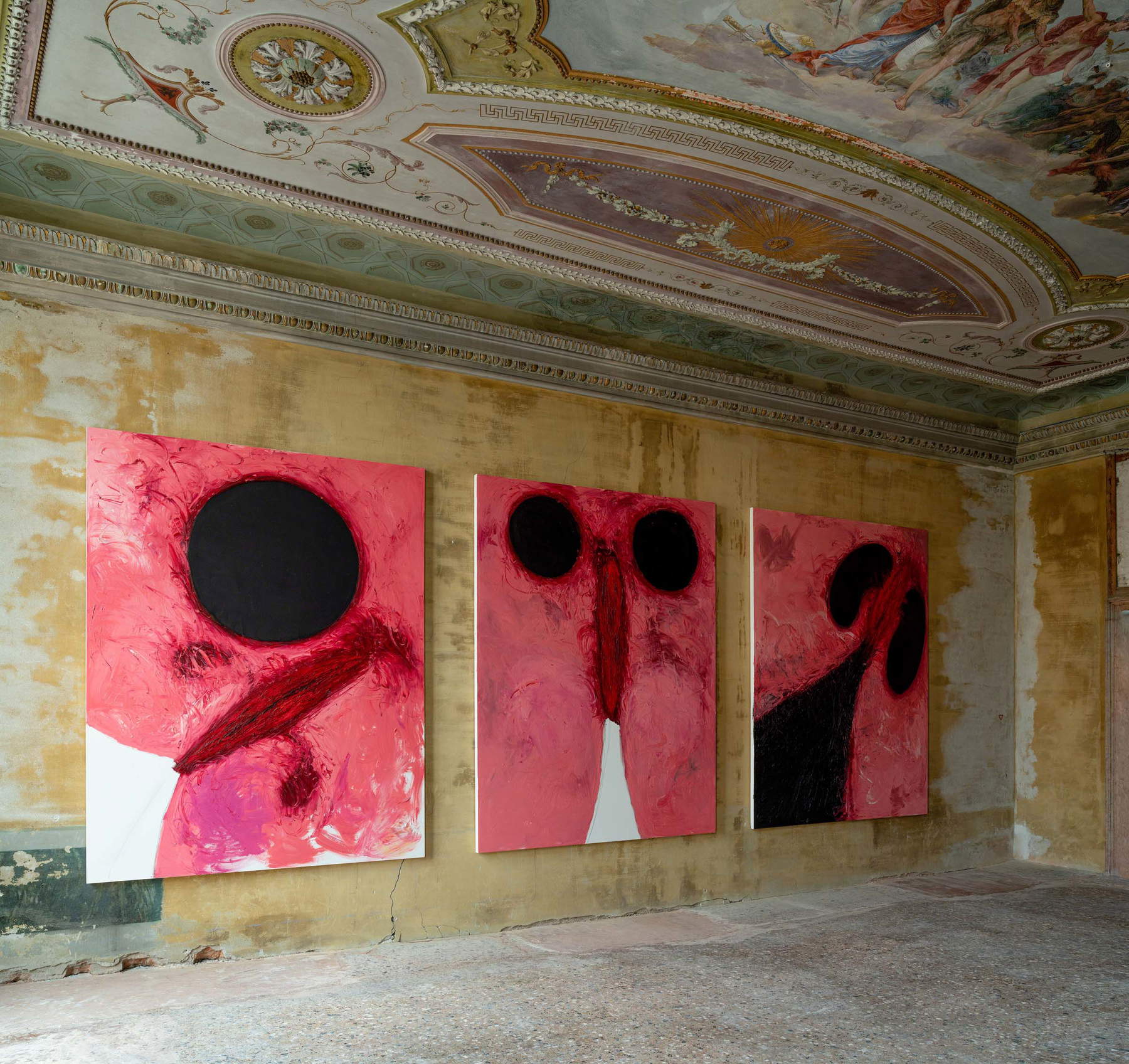
The section of the exhibition housed in Palazzo Manfrin (which has not been restored and is rough and, at times, plasterless) is constructed, in part, as a pendant. The palace’s square courtyard welcomes with a circular work with a red background (a pool whose water ripples rhythmically in a swirling fashion), while then in the portico one is greeted by Mount Moriah at the gate of the Ghetto, a site-specific installation inspired by the mountain mentioned in the Bible as the site of Isaac’s sacrifice: the primary form of the mountain is turned upside down, however, by Kapoor, who turns it into the colored ceiling of a cave (the title is also a reference to the fact that it is located a few hundred meters from the Venice Ghetto, an aspect that the artist evidently considers significant, perhaps sensitized by the fact that he is the son of a Jewish mother and having himself lived in Israel). But it is always red that dominates, in Destierro’s mountains of earth and pigment, inhabited by a dust excavating machine, but also in the celebrated Symphony for a beloved sun, originally made for the Martin Gropius Bau in Berlin: in the main-floor room with the gallery, the solar disk stands as a generating element of red-colored bricks, and, at the same time, embodies the abstract role of a mythological deity. One can walk around it to look at it, occasionally distracting one’s nose up at the Baroque frescoes with central tondo and architecture done in grisaille.
In the following rooms one can see a kind of compendium of Kapoor’s works, constructed, however, with maniacal attention to the peculiar characteristics of the exhibition space. Thus we range from mirrored steels such as Vertigo or Hidden Mirror to the aluminum discs Sky below, partly painted and partly reflective, to more textural works constructed with mounds of monochromatic pigment, or to marbles carved with primary forms. And then the body returns, the artist’s obsessions with the vagina, with blood fluid, which often seems to evoke “something violent” (so Dibbits) and the archetypes of women, which are fixed on the canvas. Indeed, painting, as Codognato writes, “does not constitute a parallel and independent activity from her more celebrated and celebrated sculptural production, but rather a continuation and integration of the semantic and formal problems of her work through myth, tradition and ritual function.”
One thus ends up being dazed by the palace. For the breadth of reflections, most of the time conflicting. For the executive solutions that range from the finished and perfectly drawn form to the roughly modeled sketch. For the dirtiness of the material and the cleanliness of the polished geometries. For the presence of mass and its disappearance into the invisible. For the baroque pursuit of effect and Protestant minimalist rigor. For the hypnotic, centripetal aspects of the work and its centrifugal capacity to evoke an other that lies elsewhere. For the unconscious charge of the stated figuration and the evocative lyricism distilled prodigiously. For, fantasizing in the emotionalamnios, one seems to understand that Alberto Burri is Rembrandt’s nephew, Hermann Nitsch the cousin of old Titian who paints with his hands. Like St. Thomas one leaves laden with doubt, but there would be no point in putting one’s finger on it. Kapoor would fool us with one of his amazing trompe-l’oeil paintings.
Warning: the translation into English of the original Italian article was created using automatic tools. We undertake to review all articles, but we do not guarantee the total absence of inaccuracies in the translation due to the program. You can find the original by clicking on the ITA button. If you find any mistake,please contact us.





























